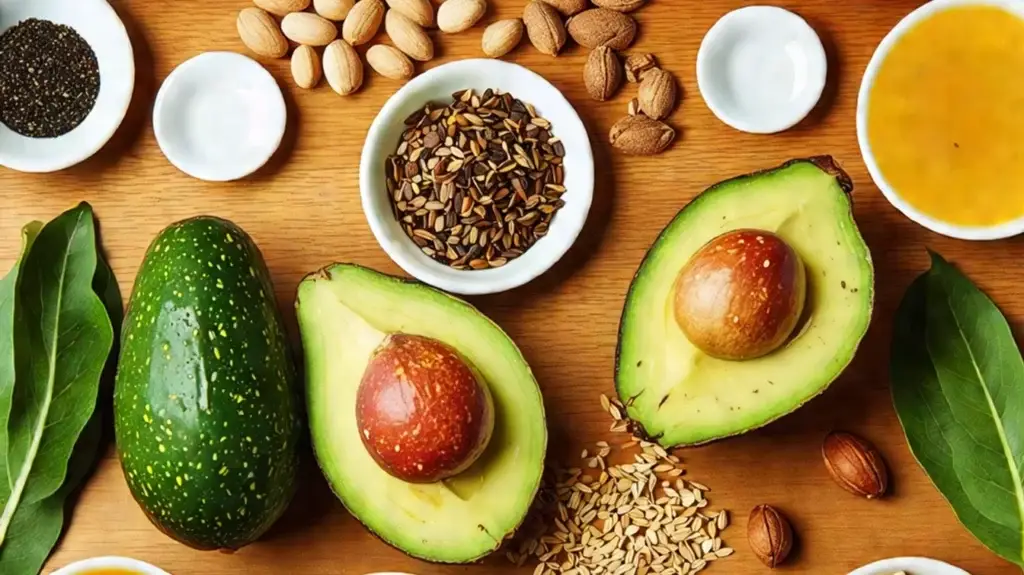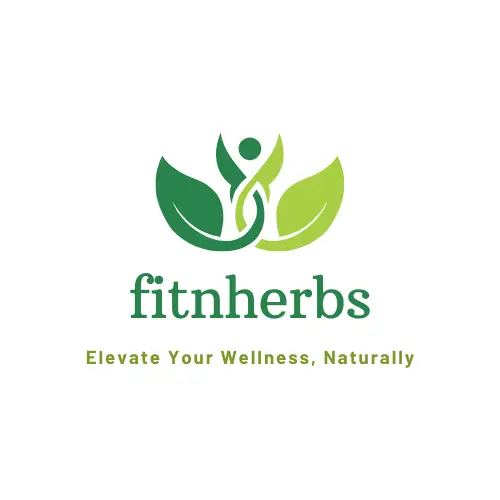Are you looking to boost your omega-3 fatty acid intake without relying on fish or fish oil supplements? You’re in the right place! Whether you’re following a vegan diet or simply want to explore plant-based alternatives, this comprehensive guide will introduce you to ten excellent sources of omega-3 fatty acids from the plant kingdom.

Why Omega-3s Matter
Before we dive into our list of plant-based omega-3 sources, let’s take a moment to understand why these fatty acids are so important for our health.
Omega-3s are essential fatty acids, which means our bodies can’t produce them on their own. We need to get them from our diet. These fats play crucial roles in various bodily functions, including:
- Supporting heart health
- Promoting brain function and development
- Reducing inflammation
- Improving eye health
- Supporting healthy skin
For years, fish and fish oil have been touted as the go-to sources for omega-3s. However, more and more people are turning to plant-based alternatives for various reasons, including environmental concerns, dietary preferences, or simply to diversify their nutrient sources.
Now, let’s explore ten fantastic plant-based omega-3 sources that you can easily incorporate into your diet.
1. Chia Seeds: Tiny Seeds Big Benefits
Chia seeds may be small, but they pack a powerful nutritional punch. These tiny black or white seeds are one of the best plant-based sources of omega-3 fatty acids.
Nutritional Profile
One ounce (28 grams) of chia seeds contains:
- 4915 mg of ALA (alpha-linolenic acid, a type of omega-3)
- 11 grams of fiber
- 4 grams of protein
How to Use Chia Seeds
Chia seeds are incredibly versatile. Here are some ways to incorporate them into your diet:
- Make chia pudding by soaking the seeds in plant-based milk overnight
- Add them to smoothies for extra nutrition and thickness
- Use as an egg substitute in baking (1 tablespoon chia seeds + 3 tablespoons water = 1 egg)
- Sprinkle on top of oatmeal, yogurt, or salads
Fun fact: Chia seeds can absorb up to 10 times their weight in liquid, making them great for hydration and digestion.
2. Flaxseeds: The OG of Plant-Based Omega-3s
Flaxseeds have been used for thousands of years and are often considered one of the original “superfoods.” They’re an excellent source of omega-3s and offer numerous other health benefits.
Nutritional Profile
One tablespoon (10 grams) of ground flaxseeds provides:
- 1597 mg of ALA
- 2 grams of fiber
- 2 grams of protein
How to Use Flaxseeds
For optimal nutrient absorption, it’s best to consume flaxseeds in their ground form. Here are some ideas:
- Add to smoothies or protein shakes
- Mix into oatmeal or yogurt
- Use as a coating for baked chicken or fish (if you’re not strictly vegan)
- Incorporate into baked goods like muffins or bread
Remember to store ground flaxseeds in the refrigerator to prevent them from going rancid.
3. Walnuts: Brain Food at Its Finest
Walnuts are not only a delicious snack but also an excellent source of plant-based omega-3s. Their shape even resembles a brain, which is fitting given their cognitive health benefits.
Nutritional Profile
One ounce (28 grams) of walnuts contains:
- 2542 mg of ALA
- 4 grams of protein
- 2 grams of fiber
How to Use Walnuts
Walnuts are incredibly versatile and can be used in both sweet and savory dishes:
- Eat them as a snack on their own
- Chop and add to salads for extra crunch
- Use in baking, such as in banana bread or brownies
- Make a walnut pesto for pasta or as a spread
Pro tip: To enhance the flavor of walnuts, try lightly toasting them in a dry pan before use.
4. Hemp Seeds: The Complete Protein Powerhouse
Hemp seeds, also known as hemp hearts, are not only rich in omega-3s but also provide all nine essential amino acids, making them a complete protein source.
Nutritional Profile
Three tablespoons (30 grams) of hemp seeds offer:
- 3000 mg of ALA
- 10 grams of protein
- 3 grams of fiber
How to Use Hemp Seeds
Hemp seeds have a mild, nutty flavor that works well in many dishes:
- Sprinkle on top of salads or buddha bowls
- Blend into smoothies for added protein and omega-3s
- Use as a topping for avocado toast
- Mix into homemade energy bars or balls
5. Edamame: The Soybean Sensation
Edamame, or immature soybeans, are a popular snack and ingredient in Asian cuisine. They’re also a surprising source of plant-based omega-3s.
Nutritional Profile
One cup (155 grams) of cooked edamame provides:
- 560 mg of ALA
- 18 grams of protein
- 8 grams of fiber
How to Use Edamame
Edamame is versatile and can be used in various ways:
- Steam and eat as a snack with a sprinkle of sea salt
- Add to stir-fries or grain bowls
- Puree into a spread or dip
- Use in salads for added protein and texture
6. Seaweed and Algae: Omega-3s from the Sea
While technically not plants, seaweed and algae are vegan sources of omega-3s that deserve a mention. They’re one of the few plant-based sources of EPA and DHA, the types of omega-3s typically found in fish.
Nutritional Profile
The omega-3 content can vary widely depending on the type of seaweed or algae. For example:
- Nori (dried): About 70 mg of omega-3s per 100 grams
- Spirulina (dried): About 230 mg of omega-3s per 100 grams
How to Use Seaweed and Algae
Incorporating seaweed and algae into your diet can be fun and delicious:
- Use nori sheets to make sushi rolls
- Add spirulina powder to smoothies
- Sprinkle dulse flakes on salads or popcorn
- Use wakame in miso soup
Note: If you’re considering algae-based omega-3 supplements, consult with a healthcare professional first.
7. Brussels Sprouts: The Surprising Cruciferous Contender
Brussels sprouts might not be the first food that comes to mind when you think of omega-3s, but these little green globes are actually a good source of plant-based fatty acids.
Nutritional Profile
One cup (88 grams) of cooked Brussels sprouts contains:
- 135 mg of ALA
- 3 grams of protein
- 4 grams of fiber
How to Use Brussels Sprouts
If you’re not a fan of Brussels sprouts, these preparation methods might change your mind:
- Roast with olive oil, salt, and pepper for a crispy side dish
- Shred raw and use in salads or slaws
- Sauté with garlic and lemon for a simple side
- Add to stir-fries or pasta dishes
8. Kidney Beans: The Omega-3 Packed Legume
Kidney beans are known for their protein content, but they’re also a good source of plant-based omega-3s. They’re versatile, affordable, and packed with nutrients.
Nutritional Profile
One cup (177 grams) of cooked kidney beans provides:
- 230 mg of ALA
- 15 grams of protein
- 11 grams of fiber
How to Use Kidney Beans
Kidney beans are a staple in many cuisines around the world:
- Use in chili or bean soups
- Add to salads for extra protein and fiber
- Mash and use as a base for veggie burgers
- Incorporate into grain bowls or burritos
9. Perilla Oil: The Lesser-Known Omega-3 Powerhouse
Perilla oil, derived from the seeds of the perilla plant, is commonly used in Korean cuisine and is an excellent source of plant-based omega-3s.
Nutritional Profile
One tablespoon (14 grams) of perilla oil contains:
- 9000 mg of ALA
- Vitamin E and other antioxidants
How to Use Perilla Oil
Perilla oil has a nutty, slightly grassy flavor and is best used unheated:
- Use as a finishing oil for salads or cooked vegetables
- Drizzle over soups or stews
- Use in dressings or marinades
- Add to smoothies for an omega-3 boost
Caution: Perilla oil has a low smoke point, so it’s not suitable for cooking at high temperatures.
10. Canola Oil: The Everyday Omega-3 Source
While it might not be as trendy as some other oils, canola oil is a good source of omega-3s and is widely available and affordable.
Nutritional Profile
One tablespoon (14 grams) of canola oil provides:
- 1280 mg of ALA
- Vitamin E and vitamin K
How to Use Canola Oil
Canola oil is versatile and can be used in various ways:
- Use for sautéing or stir-frying
- Incorporate into baked goods
- Use as a base for salad dressings
- Use for roasting vegetables
Note: Choose organic, cold-pressed canola oil when possible to avoid GMOs and ensure maximum nutrient retention.
Incorporating Plant-Based Omega-3s into Your Diet
Now that you’re familiar with these ten plant-based omega-3 sources, you might be wondering how to incorporate them into your daily diet. Here are some practical tips:
- Start your day with a chia seed pudding or a smoothie containing flaxseeds or hemp seeds.
- Snack on a handful of walnuts or roasted edamame.
- Add seaweed to your lunch salad or make sushi rolls.
- Cook Brussels sprouts or kidney beans as a side dish for dinner.
- Use perilla oil or canola oil in your salad dressings.
Remember, variety is key. Try to incorporate different sources of plant-based omega-3s throughout your week to ensure you’re getting a wide range of nutrients.
The Conversion Factor: ALA to EPA and DHA
It’s important to note that plant-based sources of omega-3s primarily contain ALA (alpha-linolenic acid). While ALA is beneficial on its own, our bodies need to convert it to EPA (eicosapentaenoic acid) and DHA (docosahexaenoic acid) for optimal health benefits.
The conversion rate from ALA to EPA and DHA can be relatively low in humans, typically around 5-10% for EPA and 2-5% for DHA. This means you may need to consume more plant-based omega-3s to achieve the same benefits as consuming EPA and DHA directly from fish or fish oil.
However, don’t let this discourage you. By incorporating a variety of plant-based omega-3 sources into your diet and maintaining overall healthy eating habits, you can still reap the benefits of these essential fatty acids.
Conclusion: Embracing Plant-Based Omega-3s
As we’ve explored in this comprehensive guide, there are numerous plant-based sources of omega-3 fatty acids available. From tiny chia seeds to leafy Brussels sprouts, these foods not only provide essential omega-3s but also come packed with other beneficial nutrients like fiber, protein, and various vitamins and minerals.
Whether you’re following a vegan diet, looking to reduce your consumption of animal products, or simply want to diversify your nutrient sources, these plant-based omega-3 options offer a wealth of possibilities. By incorporating a variety of these foods into your diet, you can support your heart health, brain function, and overall well-being.
Remember, while plant-based omega-3s are a fantastic addition to any diet, it’s always a good idea to consult with a healthcare professional or registered dietitian before making significant changes to your eating habits. They can help you create a balanced plan that meets all your nutritional needs.
So why not challenge yourself to try incorporating one new plant-based omega-3 source into your diet each week? Your body (and the planet) will thank you for it!

